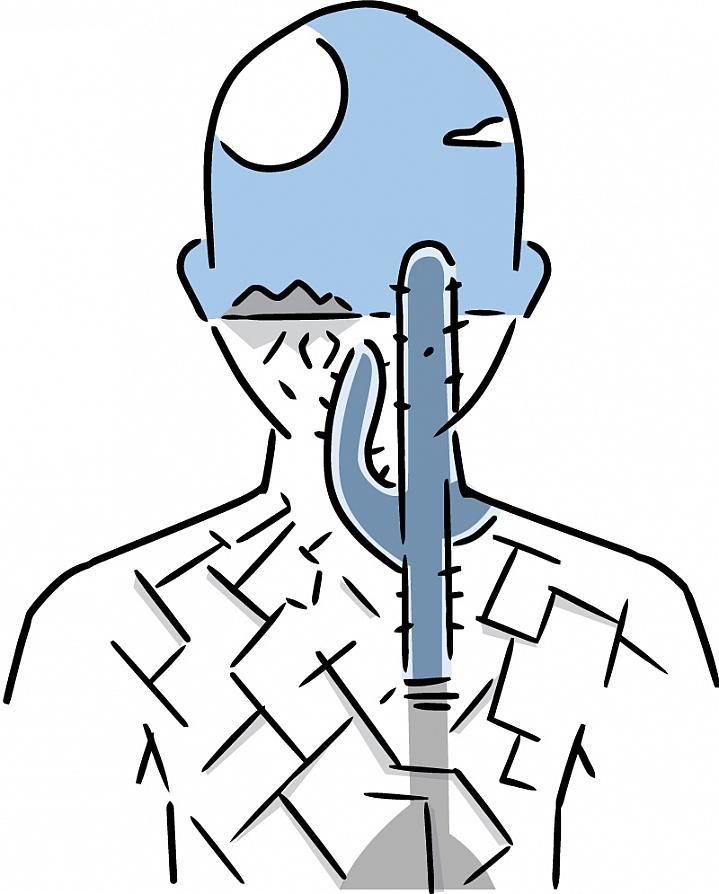Dry Eyes and Mouth?
You May Have Sjögren’s Syndrome

If your eyes and mouth feel as dry as a desert, there are many possible causes, such as bad air quality and certain medications. But if you have long-lasting, uncomfortable dryness in your eyes and mouth, along with fatigue or pain and swelling in some of your joints, you may have a condition called Sjögren’s syndrome.
Sjögren’s (pronounced SHOW-grins) syndrome affects as many as 4 million people nationwide. Men and women of all ages can develop the condition, but it most often shows up in women in their 50s and 60s. The disorder is 9 times more common in women than in men.
Sjögren’s syndrome arises when the body’s immune systemThe system that protects your body from invading viruses, bacteria and other microscopic threats., which ordinarily attacks invading bacteria and viruses, starts killing off the body’s own moisture-producing cells. The condition can occur on its own or alongside other diseases, such as lupus or rheumatoid arthritis, in which the immune system mistakenly attacks parts of the body.
In some cases of Sjögren’s, the immune system attacks several parts of the body, including the eyes, mouth, joints and internal organs. Because the disorder has such varying effects, diagnosing Sjögren’s syndrome can take a long time.
“The average time to diagnose Sjögren’s is about 7 years from the first symptoms, because the symptoms can be very subtle,” says Dr. Gabor Illei, head of the Sjögren’s Clinic on the NIH campus in Bethesda, Maryland.
Physicians use several tests to make a diagnosis. These include measuring tear and saliva flow, blood tests, and biopsies. In the biopsy test, a surgeon removes a small saliva-producing gland from the lip and looks at it under a microscope. The blood tests and biopsies let physicians know if the body’s immune system is attacking saliva-producing cells.
Since so many of the body’s systems can be affected, people with Sjögren’s syndrome often need to see several specialists. These can include an ophthalmologist for the eyes, an oral disease specialist or a dentist who has experience with dry mouth, and a rheumatologist, who can manage and coordinate care.
Many treatments for Sjögren’s syndrome aim to relieve the symptoms of dryness. For patients with mild dryness, over-the-counter artificial tears can help with dry eye. Sips of water and sugar-free candies can help with dry mouth. Because saliva usually protects teeth from decay, people with dry mouth need to be careful to avoid sugary candies, and to take care of their teeth.
For more severe symptoms, several medications are available or in development. Two current drugs boost saliva production, and another can increase tear production. Some promising new drugs are being tested to treat symptoms that affect other parts of the body.
The Sjögren’s Clinic at NIH has several ongoing clinical trials under way. “We are very patient oriented,” says Illei. “We do clinical studies. Some are just observational, so we follow the disease over time. Some are interventional—for example, trying out a new treatment.”
The goal of the clinic is to find the causes of Sjögren’s syndrome and how to treat it. If you have Sjögren’s syndrome and are interested in participating in a clinical trial, learn more about trials near you at clinicaltrials.gov.
Sjögren’s syndrome is a chronic condition, and there is no cure. However, treatment can improve symptoms and prevent problems like cavities and eye infections. Sjögren’s syndrome can be complex, but a primary care doctor or rheumatologist can help you manage your treatments and all the hurdles along the way.
NIH Office of Communications and Public Liaison
Building 31, Room 5B52
Bethesda, MD 20892-2094
nihnewsinhealth@od.nih.gov
Tel: 301-451-8224
Editor: Harrison Wein, Ph.D.
Managing Editor: Tianna Hicklin, Ph.D.
Illustrator: Alan Defibaugh
Attention Editors: Reprint our articles and illustrations in your own publication. Our material is not copyrighted. Please acknowledge NIH News in Health as the source and send us a copy.
For more consumer health news and information, visit health.nih.gov.
For wellness toolkits, visit www.nih.gov/wellnesstoolkits.



